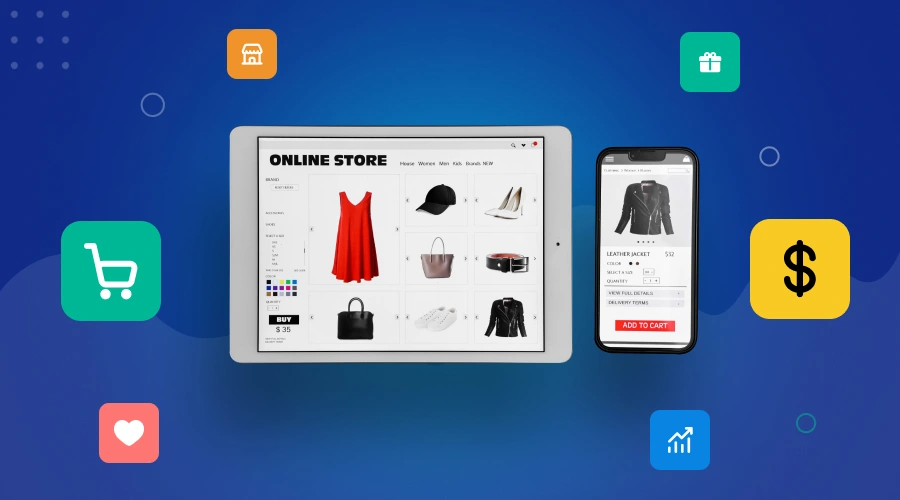Your website serves as the digital face of your enterprise, acting as the primary channel of communication between your business and prospective customers. Likewise, it holds significant sway in dictating the success or failure of your company. A skillfully constructed website with an optimal user experience has the power to captivate visitors and transform them into customers. Whereas, a lagging website with complex navigation may confuse visitors and increase the bounce rate.
Technology evolves, and so do the preferences of your audiences, which is why you must redesign a business website from time to time. A website that seems seamless and updated today may lose its charm and functionality after a few years. Several factors, such as tech trends, industry trends, and user preference, determine the lifespan of a business website. Experts recommend redesigning a business website every 2-3 years to align it with the latest design trends, search engine algorithms, and user behavior.
Reasons Why You Should Consider Redesigning Your Website
Before you start the redesign process, you should have clear goals and the right strategies to achieve them.
Inconsistent Branding: A Confusing Online Experience
Imagine a store with a mismatched logo. That’s what inconsistent website design feels like! Visitors expect a cohesive look and feel. Mixed color schemes, fonts, or menus create confusion and ruin trust. This often happens on sites that have grown organically. If your website has boomed lately, revisit your brand guidelines. Establish a consistent color palette, fonts, button styles, and more. Mailchimp’s 2018 redesign is a stellar example: a new logo, stylish fonts, and their signature color create a strong visual identity.
Lost in the Search Engine Jungle: Attract More Visitors
A beautiful website without enough visibility is a missed opportunity. To attract visitors, your site needs search engine optimization (SEO), making it “searchable” by Google and others. A powerful strategy is blogging. Websites with active blogs rank higher in search results. Research the keywords people use online and strategically incorporate them into your content—titles, headers, and even URLs. As your blog grows, link your posts to relevant pages on your website. This helps search engines and visitors understand the connections within your content. Consider migrating to a Content Management System (CMS) with built-in SEO tools for more advanced optimization.
Failing to Convert Visitors: From Browsers to Leads
Attracting audiences is great, but are they becoming customers? If not, your website might lack a clear conversion strategy. Your website should effectively communicate your brand, offerings, and target audience. However, more importantly, it should inspire visitors to take the next step: signing up for a newsletter, downloading resources, or contacting you.
Let’s look at Rev, an audio transcription service. Their pre-redesign homepage featured a confusing carousel showcasing their services with unclear visuals and navigation. Visitors had to click through menus to find service details and pricing, with no clear call to action to nudge them towards a purchase. Their redesign addressed these issues. They replaced the carousel with clear cards, each showcasing a popular service with a concise explanation, pricing, and a prominent call-to-action button. This resulted in an 18% increase in Rev’s conversion rate.
If you’re aiming for such a conversion boost, consider your platform’s capabilities. Does it integrate with customer relationship management (CRM) or marketing automation software? These tools can streamline lead capture and nurture leads through the sales funnel.
Stuck in a Featureless Web: Expanding Functionality
Your website should be user-friendly for both visitors and your marketing team. As your traffic and team grow, you might need new functionalities like live chat support, managing multi-lingual content, or conducting A/B testing to optimize your web pages.
HubSpot’s Academy website redesign in 2019 focused on improving navigability and personalization. They simplified the navigation system and added smart content filters to ensure visitors could find what they were looking for easily. If you’re looking to add advanced features like these, consider a platform that offers robust built-in functionalities and the flexibility to integrate with external software. This ensures your website can grow and adapt to your needs.
Mobile-First Matters: Don’t Lose Half Your Audience
Over half of all web searches now happen on mobile devices! Search engines prioritize mobile-friendly websites, meaning your site needs to look great on smartphones. The Art Institute of Chicago understood this and redesigned its website in 2018 to be fully responsive—it adapts to any screen size.
Luckily, some website builders like Content Hub and Squarespace are “responsive” out-of-the-box, ensuring your site displays well on all devices. However, with builders like Wix, you might need to manually check the mobile view and adjust elements like spacing or layout for optimal viewing on smaller screens.
Conclusion
Can’t decide whether your business website needs a makeover or not? Connect with Knovial to get the best suggestions. Our experts will audit your site and identify the best ways to improve your online presence. Knovial has expertise in creating customized, user-friendly websites that help businesses grow. To discuss the website redesign process and costs, you can dial 888-833-9088 or send an email to info@knovial.com.







